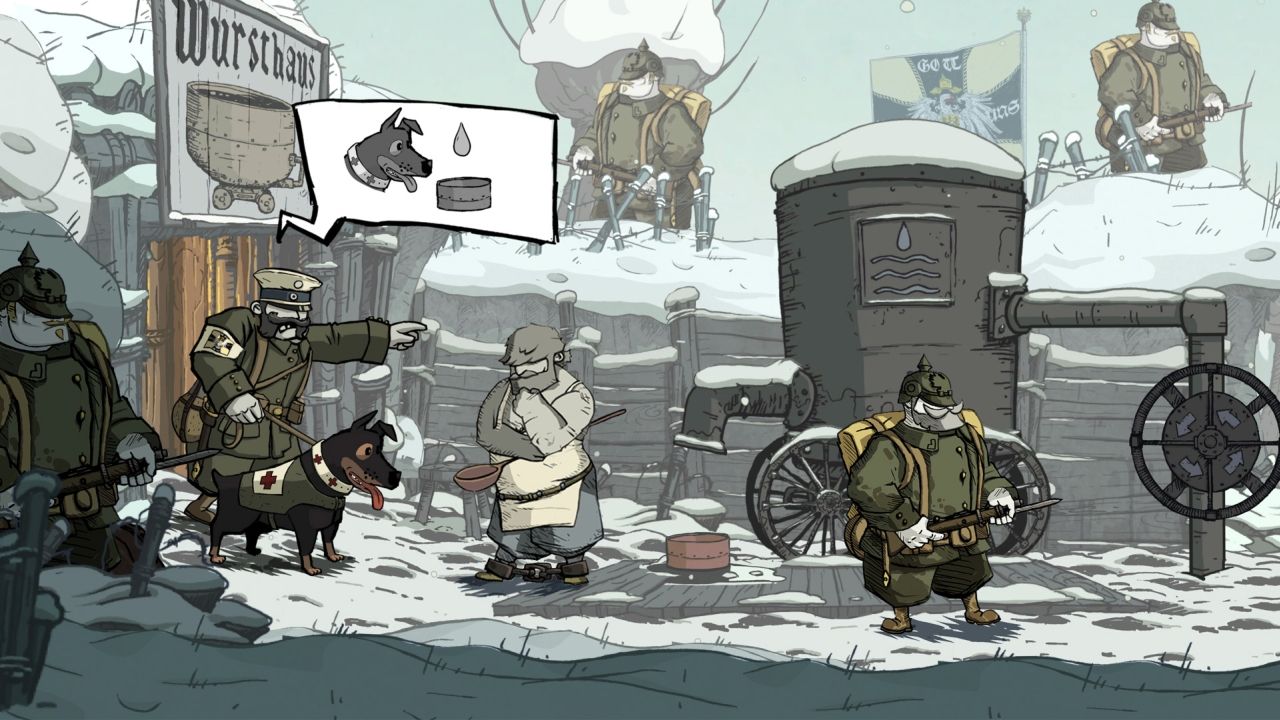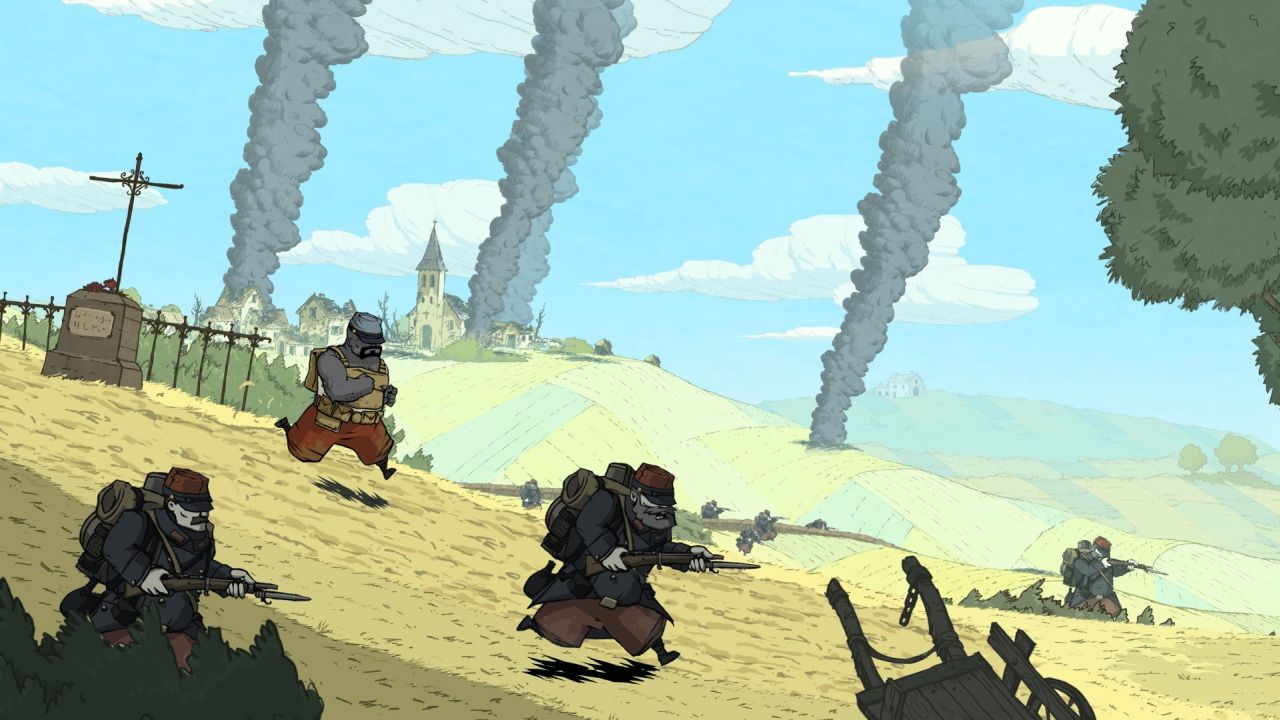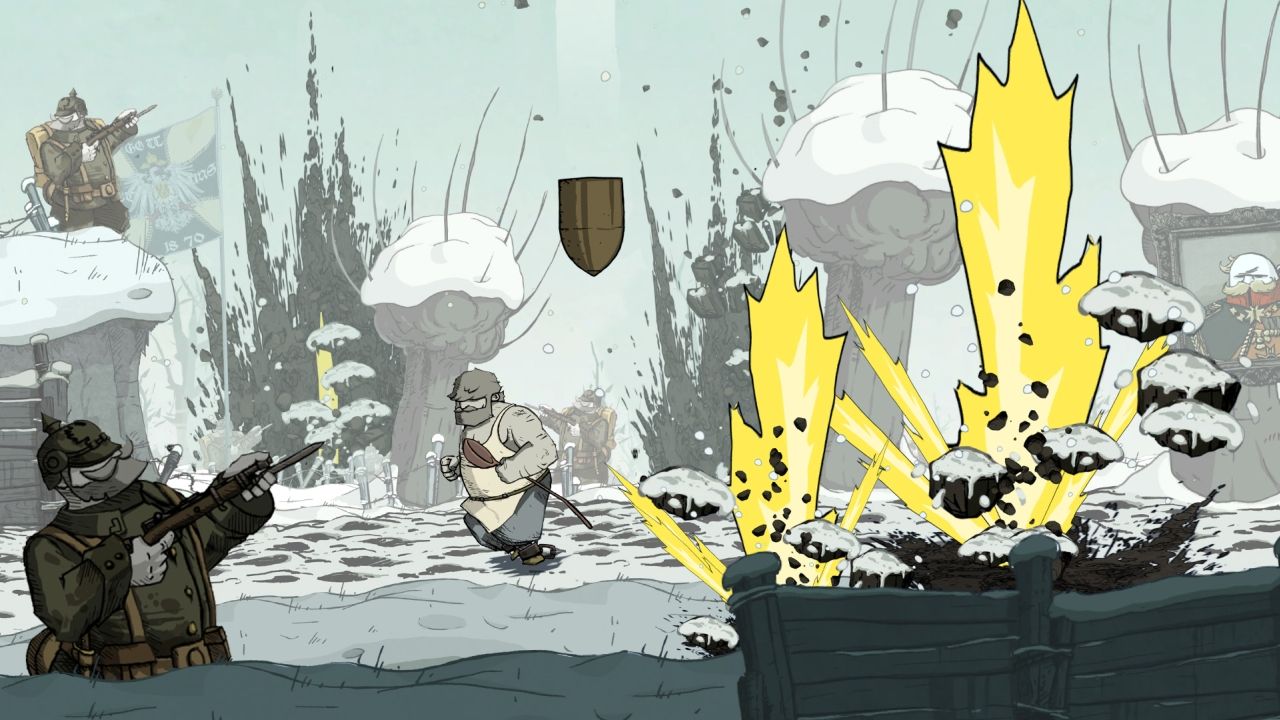Valiant Hearts: The Great War Preview – PAX East 2014
Announced by Ubisoft alongside the previously previewed Child of Light, was the puzzle adventure game Valiant Hearts: The Great War. Both games represented a stark contrast to Ubisoft’s usual design philosophy, being made by small teams with independent spirit and releasing digitally for a quarter of the asking price of big-budget AAA titles. It is Ubisoft taking a cue from the independent scene, and it might be something we see more of in the coming years.
While Child of Light is easy to wrap your brain around from a gameplay standpoint, being a semi-traditional JRPG, Valiant Hearts is a bit more difficult. At its core, the game would likely fall into the point-and-click adventure category, although a lack of mouse makes for little actual pointing-and-clicking. During my time, the game had me solve a series of environmental puzzles, use my surroundings to distract guards, and work with a canine companion to get around tricky obstacles.

Valiant Hearts tells a series of intimate stories from soldiers and civilians whose lives have been torn apart by the first World War. Opening on a map which details the German-French front and the action surrounding it, a narrator provides exposition for my character and what they will be doing. The narration is the only spoken dialogue in the game, as characters communicate through actions and word bubbles containing pictures.
Another similarity between Child of Light and Valiant Hearts is the use of the UbiArt Framework engine. In many ways, Valiant Hearts aesthetically resembles the first games to use UbiArt Framework, Rayman Origins and Rayman Legends. The characters are realized with exaggerated bodies; the soldiers are all barrel-chested men with beefy arms, their animations are rigid and over-the-top.
Speaking with members of the development team, I was told Valiant Hearts would not be backing away from the nasty imagery and dark material of World War I. The horrors of trench warfare, mustard gas, and the mechanization of combat would all be explored. This promise made me consider the meshing of serious material with whimsical art-style, because while it is unfair to dismiss the idea of it working, this sounds like Pixar doing a remake of Bridge Over the River Kwai. Great ideas don’t always mix.

I begin the demo as a prisoner in the German camp, acting as a cook. While waiting on the German officers I am instructed to make bratwurst sausages for the commanders. I guide my character on the 2D plane through the camp. The scene is dressed nicely with imagery of trench warfare, soldiers lazy sitting around waiting for action. After slipping into the makeshift kitchen, I start my first puzzle to make the officer’s food, a simple matter of turning a series of valves in the correct order. No sooner has the food been made than shells begin hitting the German camp.
As my character comes to, the scene has drastically changed. I am pulled out of the wreckage of what once was the kitchen by the game’s dog companion. The dog acts as a bridge between the shifting stories in Valiant Hearts, tying them to together. As I make my way back through the camp, instead of soldiers waiting for action I see bodies. I speak to a German officer who directs me further into the camp, but the way is blocked by a cart filled with weapons. Here the dog mechanic is explored. Using the left bumper, I can move the dog around the screen and have him collect objects I couldn’t reach myself. I use a stone to knock a broken lever out of tree and my canine pal collects the object, bringing it back to me and allowing me to continue on. I use the dog as a counterweight in the next puzzle, lifting myself to a hard to reach spot. When the dog is present in the game, the developers seem to focus around using him in the puzzles.
As I escape the German camp, I glimpse back at the battle taking place; bodies are littered on the screen as the French and German forces continue to attack each other. It is a striking image, however the odd blend still tugs at my mind, as I remain unconvinced Valiant Heart’s art-style and narrative will find a happy union.

Perspective changes from a prisoner to a soldier fighting with the French. I assume the role of special ops soldier who is charging toward the camp. While you do play as soldiers in Valiant Hearts and will see your share of combat, players will at no point be firing weapons of their own. The development team members I spoke with, talked about changing expectations of what war games should be about, and not wanting players to view Valiant Hearts as another good ol’ war-time shoot ‘em up.
While you don’t fire weapons, you have a fair amount fired at you. While playing as a French soldier, I came under fire from German turrets. Finding a crate of dynamite, I toss a stick into the debris above the turret. The explosion cause the debris to fall on the turret and I make my way around the barricades. Sneaking through the German forces, I finally reach my objective: a bridge which needs to be destroyed. I place the charges in the correct spots and set off the bomb. An animation shows the bridge exploding and my time with Valiant Hearts ends.
It is hard to know what to make of Valiant Hearts. The puzzles are interesting and the adventure gameplay design is a nice fit for the art-style, but it is hard to imagine it all coming together as a cohesive package. There is plenty of emotional material to mine in World War I, plenty of ways to make the adventure work, but the game seems to be mixing All Quiet on the Western Front with Monkey Island. That is not to say Valiant Hearts doesn’t have its strong points. Each element feels well-crafted and well-intentioned on its own, so while I might not be tapped into Valiant Heart’s vision yet, I am certainly willing to see more. Valiant Hearts: The Great War will be released in 2014 – possibly this summer – on PS4, Xbox One, PS3, Xbox 360, and PC.
